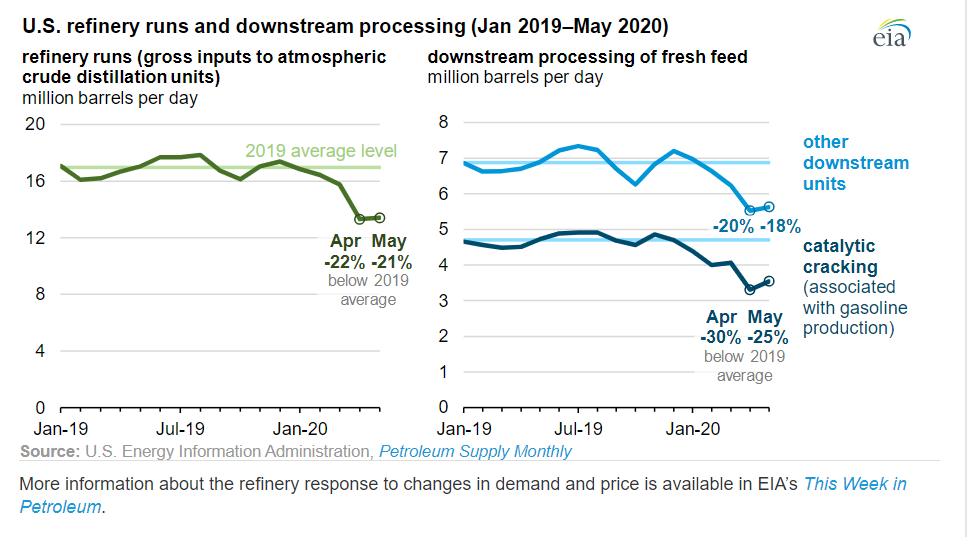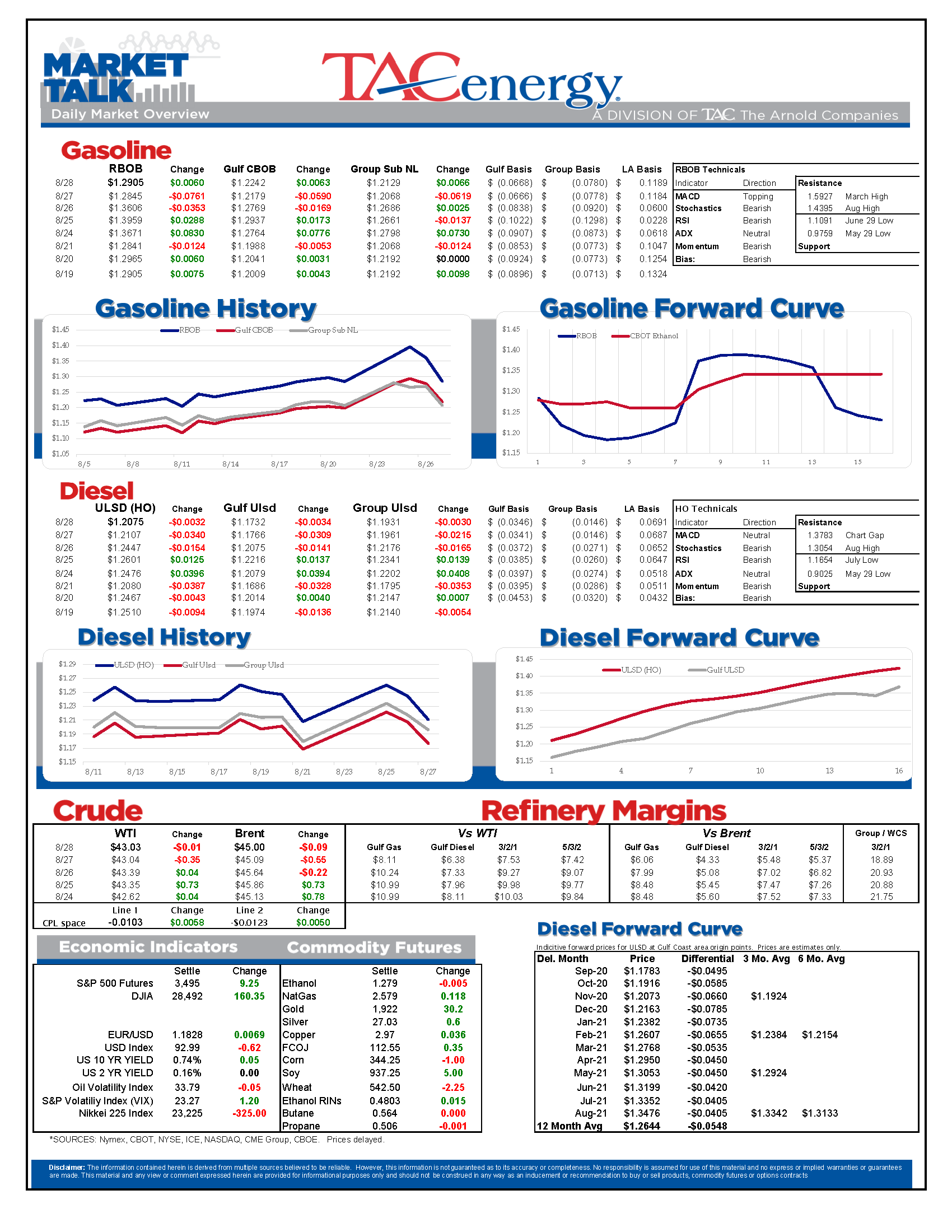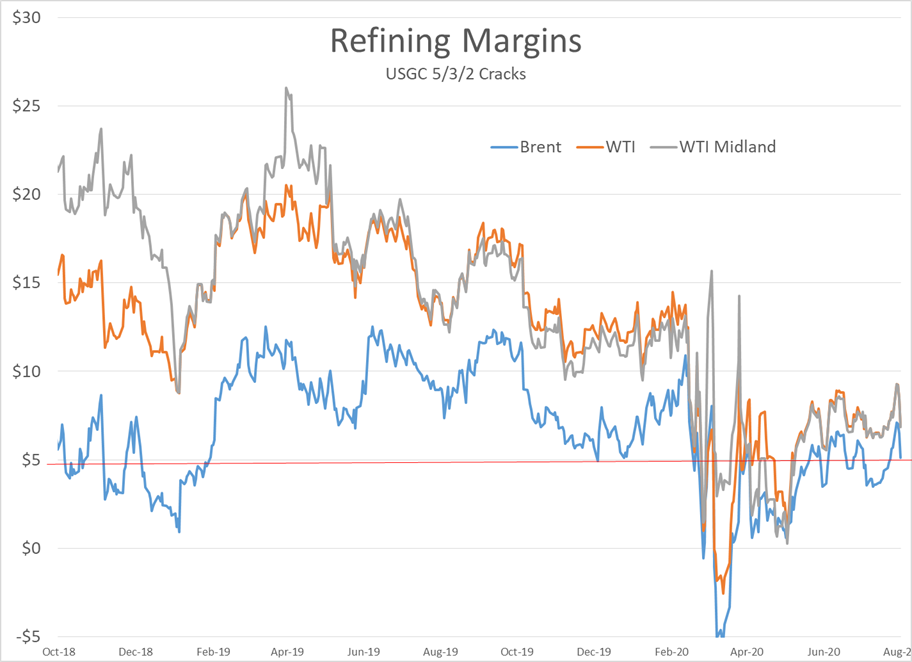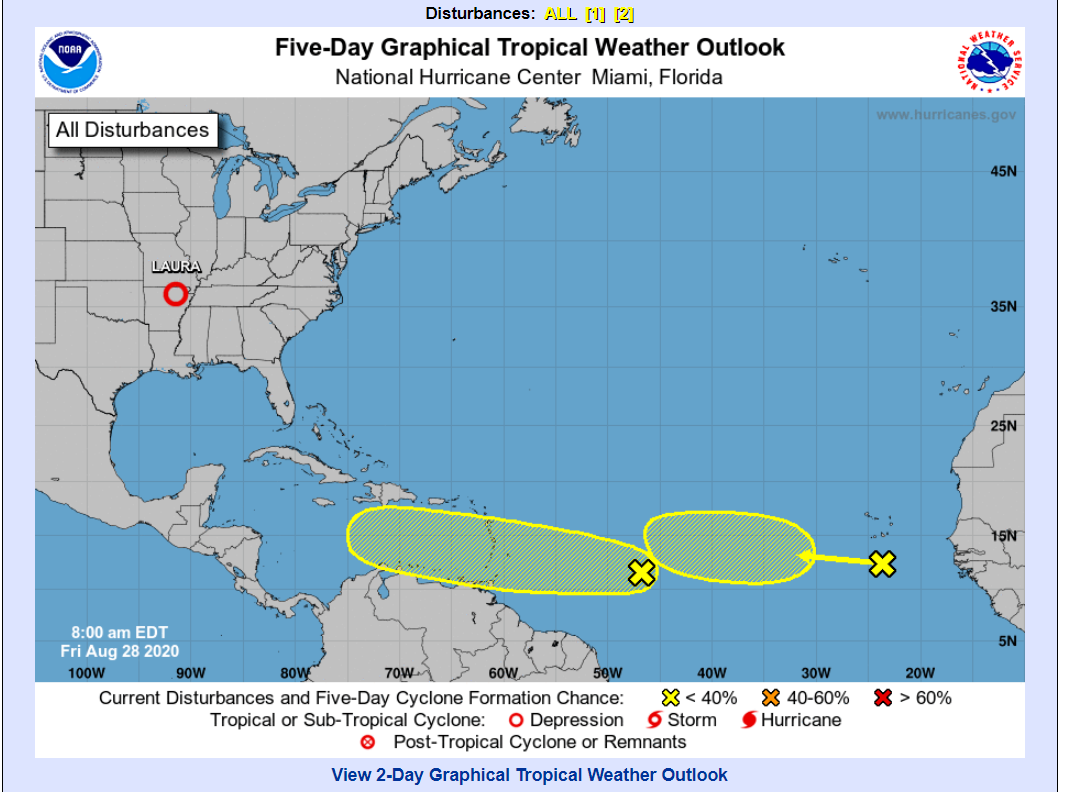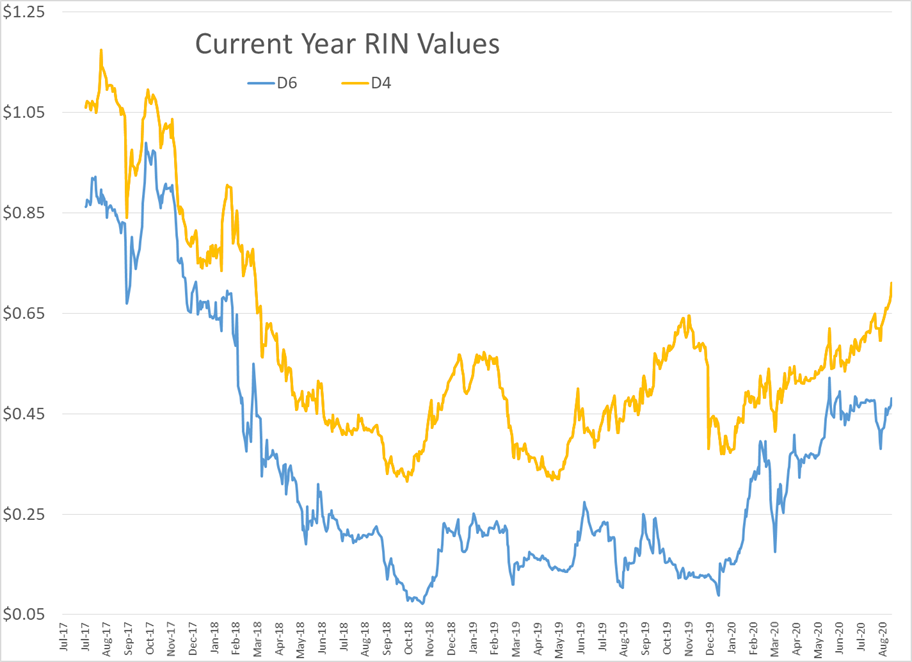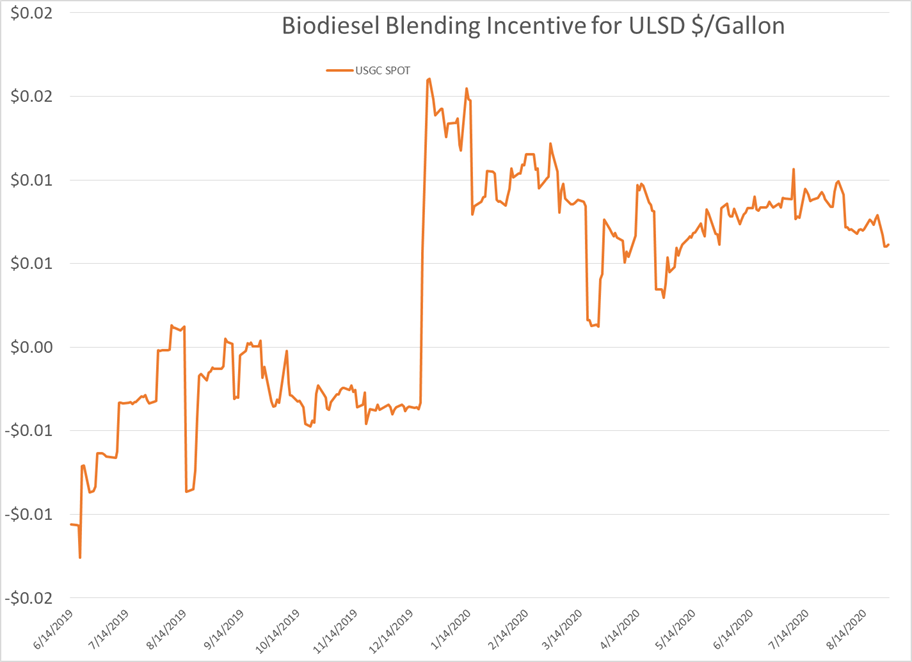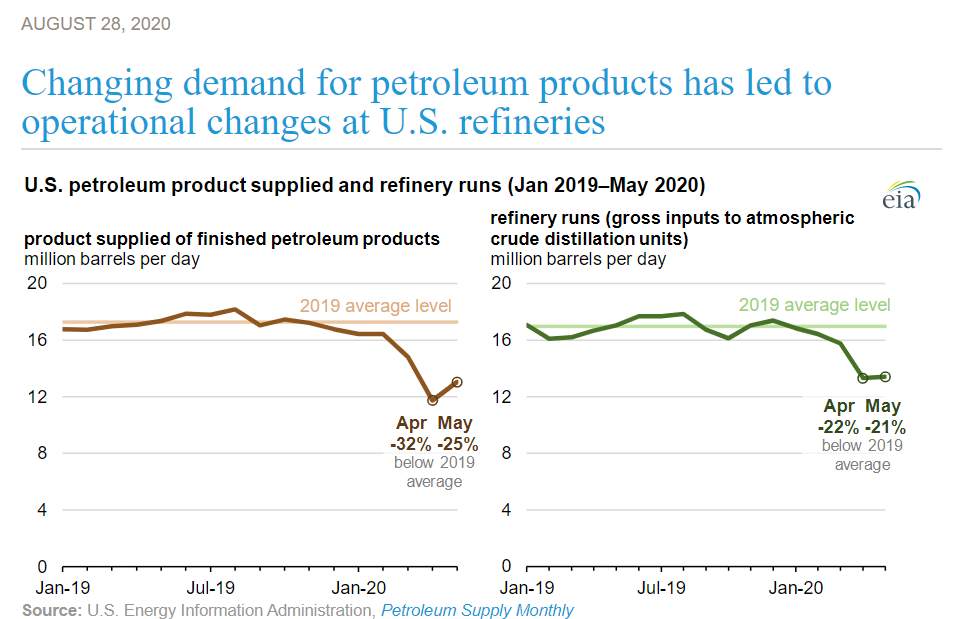Refineries Initiate Restart Efforts

We’ve reached the calm after the storm as the Gulf Coast refining industry is assessing the damage from Hurricane Laura, and most companies seem to be breathing a big sigh of relief. Unfortunately, much of the country is still going to feel an impact from this storm, as flooding potential stretches through the mid-west and east coast through the weekend.
Three of the refineries that had initiated shutdowns ahead of the storm have already filed with the state that they were beginning restart efforts, and more are expected to follow suit today as reports suggest the plants outside of Lake Charles likely avoided major damage thanks to the eastward shift in the storm’s path prior to landfall.
We will probably not know the status of the two refineries that were operating in Lake Charles before the storm until next week, since damage assessment crews were not allowed into the area Thursday. A major fire in a nearby chemical factory, and the closing of the Interstate 10 bridge due to a runaway casino boat are just a couple of examples of issues that may be hampering those efforts.
The one critical unknown in terms of regional supply is whether or not the Colonial station near Lake Charles suffered any damage. The pipeline continues to operate downstream, but if Lake Charles is blocked, the barrels originating in the Houston and Port Arthur hubs won’t be able to move through to the rest of the country. There are no reports that the facilities were damaged, they just don’t know since accessing the location may still take a couple more days. Explorer pipeline reported no damage to its facilities, but will still see slight delays in restart due to uncertainty from the local utilities on power supply.
The bad news for refiners that managed to avoid operational issues during the storm is that the boost in margins was short-lived as both gasoline and diesel prices have crumbled, and are now threatening a technical break to the downside that could drag many plants back to the cusp of break-even levels.
Don’t relax just yet. As is often the case in active hurricane seasons, major hurricanes aren’t isolated events, (i.e. Harvey/Irma/Maria in 2017, Gustav and Ike in 2008, Katrina/Rita/Wilma in 2005). Already this morning, the National Hurricane Center is tracking two new potential systems crossing the Atlantic, both given 30 percent odds of development next week.
D4 (Bio) RINs hit a fresh 2.5 year high Thursday, as surging soybean prices and falling diesel prices gives a poor outlook for incremental bio blending. Exports to China and weather damage from the Derecho earlier in the month are both getting credit for the rally in Soy prices. Corn and ethanol prices have also been rallying, but have not kept pace with bio, partially due to the fact that ethanol blending is less discretionary, which has kept D6 RINs from pushing through recent highs so far.
The EIA this morning took a closer look at how U.S. refineries have been forced to make drastic operational changes this year due to COVID demand impacts. Perhaps the most impressive piece is how the plants have been able to dramatically shift product yields in response to the wild swings in gasoline and jet fuel demand. That unprecedented shift towards diesel production also helps explain why diesel prices barely flinched this week even when it appeared that Laura might shut down 20 percent of the country’s refining capacity.
Click here to download a PDF of today's TACenergy Market Talk.
Latest Posts
Week 17 - US DOE Inventory Recap
The Energy Complex Is Trading Modestly Lower So Far This Morning With WTI Crude Oil Futures Leading The Way
Energy Futures Are Drifting Quietly Higher This Morning
Refined Products Holding Close To Break Even While Oil Prices Are Losing Just Under 1%
Social Media
News & Views
View All
Week 17 - US DOE Inventory Recap

The Energy Complex Is Trading Modestly Lower So Far This Morning With WTI Crude Oil Futures Leading The Way
The energy complex is trading modestly lower so far this morning with WTI crude oil futures leading the way, exchanging hands $1.50 per barrel lower (-1.9%) than Tuesday’s settlement price. Gasoline and diesel futures are following suit, dropping .0390 and .0280 per gallon, respectively.
A surprise crude oil build (one that doesn’t include any changes to the SPR) as reported by the American Petroleum Institute late Tuesday is taking credit for the bearish trading seen this morning. The Institute estimated an increase in crude inventories of ~5 million barrels and drop in both refined product stocks of 1.5-2.2 million barrels for the week ending April 26. The Department of Energy’s official report is due out at it’s regular time (9:30 CDT) this morning.
The Senate Budget Committee is scheduled to hold a hearing at 9:00 AM EST this morning regarding a years-long probe into climate change messaging from big oil companies. Following a 3-year investigation, Senate and House Democrats released their final report yesterday alleging major oil companies have internally recognized the impacts of fossil fuels on the climate since as far back as the 1960s, while privately lobbying against climate legislation and publicly presenting a narrative that undermines a connection between the two. Whether this will have a tangible effect on policy or is just the latest announcement in an election-yeardeluge is yet to be seen.
Speaking of deluge, another drone attack was launched against Russian infrastructure earlier this morning, causing an explosion and subsequent fire at Rosneft’s Ryazan refinery. While likely a response to the five killed from Russian missile strikes in Odesa and Kharkiv, Kyiv has yet to officially claim responsibility for the attack that successfully struck state infrastructure just 130 miles from Moscow.
The crude oil bears are on a tear this past week, blowing past WTI’s 5 and 10 day moving averages on Monday and opening below it’s 50-day MA this morning. The $80 level is likely a key resistance level, below which the path is open for the American oil benchmark to drop to the $75 level in short order.
Click here to download a PDF of today's TACenergy Market Talk.

Energy Futures Are Drifting Quietly Higher This Morning
Energy futures are drifting quietly higher this morning as a new round of hostage negotiations between Israel and Hamas seem to show relative promise. It seems the market is focusing on the prospect of cooler heads prevailing, rather than the pervasive rocket/drone exchanges, the latest of which took place over Israel’s northern border.
A warmer-than-expected winter depressed diesel demand and, likewise, distillate refinery margins, which has dropped to its lowest level since the beginning of 2022. The ULSD forward curve has shifted into contango (carry) over the past month as traders seek to store their diesel inventories and hope for a pickup in demand, domestic or otherwise.
The DOE announced it had continued rebuilding it’s Strategic Petroleum Reserve this month, noting the addition of 2.3 million barrels of crude so far in April. Depending on what the private sector reported for last week, Wednesday’s DOE report may put current national crude oil inventories (include those of the SPR) above the year’s previous levels, something we haven’t seen since April of 2022, two months after Ukraine war began.
The latest in the Dangote Refinery Saga: Credit stall-out, rising oil prices, and currency exchange.
Click here to download a PDF of today's TACenergy Market Talk.
